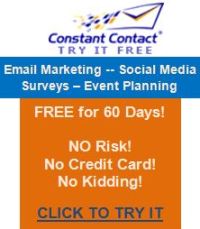Here is a great article by a colleague of mine at Constant Contact, Emile Wiseheart: ‘3 Common Mistakes Seasonal Businesses Make with Email Marketing’. Bottom line is to stay active with your marketing throughout the year, even during your off-season. Please enjoy.
It’s no secret that small businesses rely on email marketing to communicate with customers. But what if you are a seasonal business? Does email marketing have the same results? Are there differences in best practices? Do seasonal businesses need to be sending emails all year long?
The short answer is yes.
If you’re a seasonal business, you could be making one email marketing mistake that is costing you big time: slowing down or even stopping your email marketing during the off season. Unfortunately, this mistake could have some major consequences, such as lost business, poor email marketing results, annoyed customers, and even being forgotten.
Here is a quick list of some common mistakes and best practices seasonal businesses should be aware of when it comes to keeping a consistent line of communication open between the business and customer:
1. Going quiet during the off season
The biggest problem with not sending emails during off-season is that your customers forget who you are and how much they love you! This could lead to unsubscribes or poor email results with your future emails.
Tip: Try sending at least one email each month to keep your business top of mind throughout the off season. This takes a very small effort and will ensure your customers stay familiar with your business.
2. Sending too many emails once the season kicks off
Your re-opening should be a big event, but, if your customers haven’t heard from you at all during off-season it could become overwhelming. Nobody likes to be “sold” to, especially if they have to dig into their memory to figure out who you are.
Tip: Easing into opening season with a few promotional emails is like greasing up the wheels before a big race. It’s a great way to prepare your customers for what’s to come.
3. Overlooking the value of consistent communication
When it comes to staying top of mind, consistency is always key. Many business don’t want to come off as pests, but you should remember that these customers signed up for your email list for a reason. They want to hear from you.
Tip: Remember this: when you consistently communicate with your customers, it becomes an anticipated and genuinely good experience for them.
Don’t let your marketing take a break
For many seasonal businesses, the off-season is a time for the important behind the scenes work. From planning inventory to cleaning, and maybe even taking a well-deserved break, it can be just as busy as the on-season. Still, that’s not the case for your customers.
During off-season it’s likely that customers aren’t thinking about your business. ‘Out of sight, out of mind’. Instead, with email marketing, you can continue to stay top of mind, communicate, and engage with your customers all year round setting yourself up for even more success once your season starts.
Are you making any of these common mistakes? Keep your marketing thriving year-round with help from eXtra Contact.
Here is a great article by a colleague of mine at Constant Contact, Blaise Lucey. Take advantage of these 3 tips to grow your database.
3 Ways to Get Facebook Fans to Subscribe to Your Email List
Small businesses and organizations that have established themselves on Facebook often find that getting a specific message out to their audience can be difficult.
After all, Facebook is like a concert: it’s crowded and loud, and there are a lot of flashy things to look at.
Regular posting can help keep you connected, but you never really have the chance to communicate with a customer one-on-one.
That’s where email marketing comes in.
Each email is like a backstage pass to your organization. Think big with each newsletter: This is the chance for people to really get to know who you are, what you do, and to see you demonstrate your expertise in the field.
Unlike the chaotic “concert” of Facebook, emails are where you have the opportunity to really capture someone’s attention for an extended period of time.
But how do you get people to sign up for those backstage passes in the first place? Here are 3 tips:
1. Have a spot for fans to sign up
First of all: If fans want to sign up for your email list, where do they go? Remember, Facebook’s already a noisy and very distracting concert. Your fans may like what they hear, but that’s not going to help if they can’t find the VIP room.
The Rock School, a private institution in Gainesville, Florida, used Constant Contact’s Join My Mailing List app on its Facebook Page to encourage sign-ups.
That means that there’s a “Join My List” tab on the left column of the Page for anyone who’s interested in learning more about the school via email.
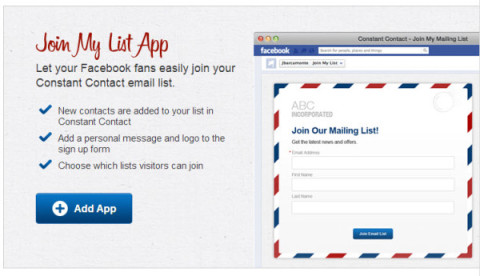
And it works: After seeing photos of all the great things students are doing at the school on Facebook, families get interested enough to sign up to learn more.
“We get 40 to 60 leads a month from email marketing,” says the school’s vice principal, Jim McKenzie.
2. Host a Facebook Promotion
People won’t sign up to get another email in their inboxes if they don’t have a good reason. After all, they may like the music on Facebook, but would they really want backstage passes to meet the business outside of the social media stadium?
Jamie Lee Berube, the owner of Hamilton Wee Pigges and Paws in Stoney Creek, Ontario, decided to offer new email subscribers the chance to win something on her Facebook Page.
Her first Facebook promotion was a contest that offered one fan a free Lifecast Statue. The entry form gave new fans the chance to sign up for Hamilton Wee Pigges and Paws email list. With a possible reward being offered, fans started to sign up.
The campaign ran for 10 days and Jamie’s list grew by over 100 new email addresses. The contest itself was shared through Facebook more than 100 times, too. And the 60 new fans didn’t hurt, either.
3. Offer exclusive content
When it comes time to send a newsletter to subscribers, it’s important to think about how you’re going to make the newsletter different from a Facebook Page. With all the extra space and opportunity for images that an email provides, you can really create a focused and intimate experience. Remember: When people are reading an email, you have their undivided attention.
We covered the list-building strategy of Cedar Creek Productions, which used Facebook as a platform to promote the award-winning film Buck. Through a “You’ll Hear It Here First” campaign, the studio promised fans that anyone who signed up for the email list would hear the latest news about interviews, screenings, and more before it was posted to social media. This netted the studio more than 2,000 new email subscribers.
Not every organization may have an award-winning film at their fingertips, but the trick is to just think about what news and content you can offer fans that they can’t get through Facebook
Not that Cedar Creek Productions let their newsletters stay hidden away in subscriber inboxes, either.
After an email is out, Pam Miles, executive assistant, explains that she uses Constant Contact’s Simple Share feature to share the newsletter on Facebook, Twitter, and other social media channels. Some emails are subsequently shared more than 50 times by subscribers and fans, and there’s no doubt that showcasing those newsletters has gotten more people interested in signing up themselves.
Emailing on a Good Note
Facebook and email go together like a great concert and the t-shirt you take home to remember the experience.
Don’t leave your fans cheering on Facebook — encourage them to follow you “backstage” by making it easy for them to find you. And, after they’ve signed up for those emails and get backstage, it’s up to you to prove to fans it was all worth it!
Not a Constant Contact customer? Start your free 60-day trial today!
As a small business owner, you know how important a first impression can be.
Whether it’s the first time someone walks into your store, the first time someone calls your office, or the first time someone looks up your business online-you work hard to make sure customers walk away thinking positively about your brand.
An effective welcome email can make or break the relationship with your customer because this is the email that goes out directly after they’ve signed up and asked for information from you. Their interest is at a peak: they’ve just taken action on it! Reaffirm that they’ve made the right decision by opting in to your contact list, tell them what to expect in the future, and encourage readers to join your social networks.
eXtra Contact can design a Welcome Email for you with your branding, logo, and content. Each time a new contact joins your list, they will automatically receive your Welcome Email, adding to that great first impression.

1. Does your business marketing plan include “online marketing”?
A business plan is a road map on getting where you want to go. If you don’t have a clear destination in mind, then you’re sure to get lost along the way. If online marketing is not a part of your business plan yet, then you will definitely want to ask yourself these questions…
2. What do you want to achieve with your online marketing program?
What are your Primary Goals?
– Generate leads & sales
– Increase brand awareness
– Grow your database
– Cultivate business relationships
What are your key Action Items?
– Build / improve your website
– Send out email marketing campaigns
– Improve your search engine optimization (SEO)
– Develop a social media presence
3. Who are your ideal customers?
In a perfect world, who is your ideal client? What are the demographics of this person? You must target your marketing messages and online tools to reach the specific type of person you’re hoping to connect with.
4. What keywords would these ideal customers use to find you?
If you want to be successful in business today, your business needs to be found on Google. If you’re not sure where to start, an SEO specialist can help you optimize your SEO strategy.
5. What can you afford in both time and money?
Take a fair assessment of the time and money you are able to invest in online marketing and make sure your action plan is realistic.
You Know Your Business Best!
No-one knows your business dreams and goals better than you do. If online marketing is not a part of your business plan yet, then you will definitely want to call an expert consultant like eXtra Contact to help you with the technical hurdles. However it’s critical that you first ask yourself these key questions, so that you can come to us fully prepared with clear and specific goals.
~ Crystal Catudal – Marketing Director, Senior Graphic Designer
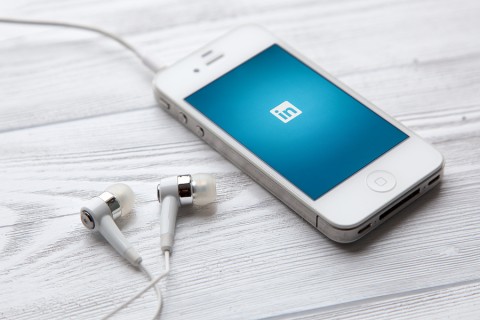
LinkedIn is “the” professional’s social network. Recent reports reveal that there are over 332 million users and one in three professionals are already members. The question isn’t whether you should be on it but “how” you should use it.
#1. Media
Gaining media exposure on a consistent basis is a powerful way to boost your credibility in the marketplace, get your message in front of thousands of people and position you as an authority figure within the industry. This will ultimately drive the bottom line if effectively used.
Thanks to LinkedIn you can now start connecting and building relationships with hundreds of journalists and editors from around the world. Over the past few years this network has helped me and the companies I’ve been involved in get free media exposure across 50+ media publications including: Forbes, Inc, Entrepreneur, NBC News and the Huffington Post.
#2. Lead Generation
With over 332 million members across 110 different industries and 200 countries it’s never been easier to search, find and connect with thousands of potential clients without burning a hole in your marketing budget.
Here are some interesting stats you may not know about LinkedIn:
- More then 61% of people use it as their primary professional network
- It generates more leads for B2B companies than any other social network
- It is the biggest professional networking site growing by 2 new members per second.
In my opinion LinkedIn is the most powerful marketing tool of the 21st century. It gets our message in front of decision makers quickly and effectively.
#3. Joint Venture Partnerships
If you study the corporate strategy of some of the biggest brands in the world over the past few decades, you will see one thing they all have in common: the implementation of joint venture partnerships with key industry players.
This is the process of finding complimentary businesses that your clients are currently using before, during and after your service/product and partnering with those businesses to get your message in front of their clients, database or community.
If you would like professional advice on how to increase your sales, with strategic social media marketing, contact eXtra Contact today. ~ Author Credit: Jeff Bullas
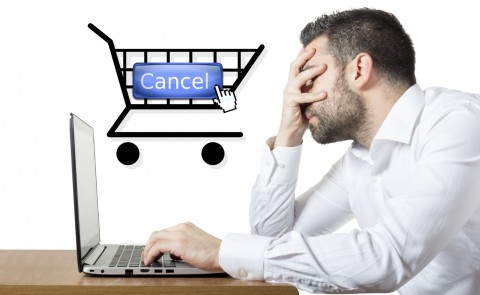
You’re an innovative business owner who wants to get more sales via your online shopping cart. You’ve spent a good amount of time, effort and money on digital marketing and advertising to drive visitors to your website.
Online Shopping Carts are a great marketing way to make money fast! It also saves you the hassle of chasing people down for payment, the effort of entering credit card transactions by hand and the frustration of waiting for cheques to arrive in the mail.
However, your website analytic report indicates that even with huge website traffic, an alarming number of customers suddenly abandon the shopping cart and leave. What’s going on here?
Here are 10 of the most common reasons customers decide to abandon their online shopping carts and leave your online store without spending any money:
1. Annoyed at Complicated Checkout Process:
Keep the process simple and confined to 1 page.
2. High Shipping Costs or Slow Shipping:
High shipping rates and slow delivery decreases motivation.
3. Shipping Costs Listed at the End:
Customers hate surprises at the end of the billing process.
4. Forced to Register or Create an Account:
Most people just want to buy and leave.
5. Lack of Payment Options:
Ensure you support PayPal and a variety of credit card options.
6. Unsure of Security Features:
People are fearful of fraud, ensure you support secure shopping.
7. No Coupon Codes and Promotional Offers:
Offer discounts as incentives to repeat buyers.
8. Lack of Product Information:
Be detailed in product descriptions to help buyers make a decision.
9. The High Cost of Products:
Price competitively, if they can get a better deal elsewhere, they will.
10. They Just Want to Look Around:
Some shoppers are just browsing. Make sure there is a “Sign Up for Our Mailing List” field available on every page of your website. This will increase the chances of a future sale by creating an ongoing email relationship.
If you are concerned about a high rate of shopping cart abandonment, it might be worth having the checkout process tested by an expert to ensure it’s easy and user friendly.

It’s heartbreaking to think that people are making snap judgements about whether or not to read your emails, based on a quick glance. So, how can you keep your email out of the trash? The secret is “Good Design”…
TOP 6 DESIGN MISTAKES
1. Missing Banner
All your professional emails should feature an instantly-recognizable, consistent header image. Over time, your header image will be associated with the high-quality information you share.
2. Hard-to-Read Fonts
Your email newsletter’s main goal is to communicate, but what if the words are hard to read? Be sure to avoid using fonts that are too small. Also, avoid combining too many different fonts as this makes your email look messy.
3. Color Catastrophes
For your email to look professional and inviting, you have to master color. Don’t use too many colors as this creates confusion and overwhelms the reader.
4. Confusing Information
When a reader glances at your email, they should know right away which information is the most important. Make this obvious by using a large, bold headlines for newsletter’s main topics.
5. Awful Images
There’s nothing that says “an amateur designed this email” like low resolution images or cheap clip art.
6. No Standard Footer
Featuring your contact information, your company mission, and your social media profiles in a consistent footer area in every email makes you look professional.
Make your emails ‘keepers’! Use these tips to create a recognizable and high quality brand experience with every message you send. It’s the best way to ensure that the great information you share doesn’t end up in the virtual trash heap.
Insight provided by Constant Contact KnowHow
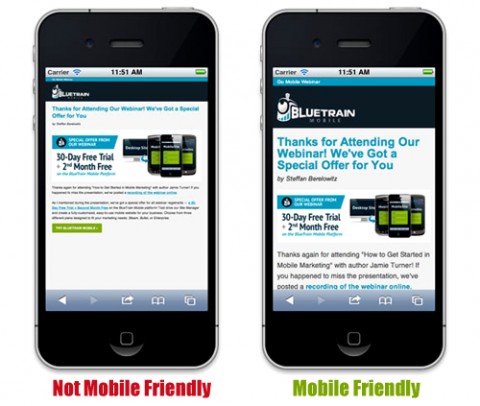
Smartphone usage is sky-rocketing, and with it, so is the number of people that are reading email on a mobile device.
According to Litmus, 43% of email is now opened on a mobile device. That number is up 138% from 2010, and I think it’s a pretty safe bet that it’s going to continue to grow.
This means that you need to be creating emails that are mobile friendly. A mobile-friendly email is an email that displays optimally between a desktop/laptop and a mobile device, ensuring that it will look great regardless of where your customers and prospects read it.
1. Be as concise as possible in both design and content
Having a clear and concise message should be a staple of any email, but it’s even more important when designing for mobile. Screen real estate is very valuable on mobile (this is going to be a common theme), so keep the design very clean and simple and focus on the essentials.
2. Use a single column template
Because of the limited real estate you get with a mobile device, it’s generally better to use simple layouts. Often times with multi-column layouts (2 columns and more) your readers will have to zoom or scroll on their smartphone to see everything. Using a single column template will make your content much more flexible for all screen sizes.
3. Use a single, clear call to action
Make sure to include a clear call to action, and put it near the top of your email. Tell your readers what you want them to do, and make it really easy for them to do so. Whatever the action you want them to take, just make sure it’s loud and clear. And remember — with mobile, the finger is the new mouse, so make sure it’s really easy to click.
4. Avoid tiny fonts
Make sure your text can be read easily. Use a minimum of size 11pt font for body text and 22pt for headlines. We also recommend using a strong contrast of colors, like dark text on a light background. Many people turn down the brightness level on the mobile device to help conserve battery—and they are often reading on the go outside in the sunlight—so a strong contrast of colors will be easier to read.
5. Take it easy on images
Only use the images that are essential to your email. Here’s why: Apple’s iOS automatically enables images to display by default, but many other mobile device platforms—like Android—turn images off by default. If your email has a bunch of images in it, they might just look like chunks of white space. Because of this, we always recommend including image descriptions (also known as alt text) to let people know what the image is even when it’s not being displayed.
A good tip is to always preview your email and make sure it still looks great, even if none of the images are displayed.
Insight provided by Constant Contact KnowHow
| 













